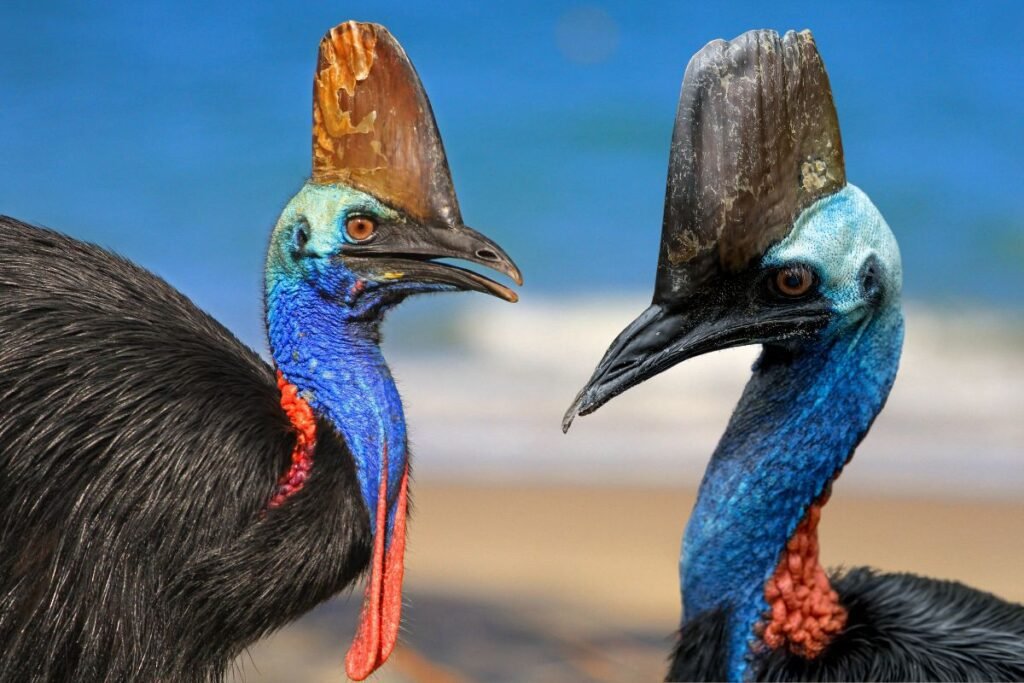Flightless birds, a fascinating group of avian species, have captivated the interest of ornithologists and bird enthusiasts alike.
These unique creatures, characterized by their inability to fly, exhibit remarkable adaptations and evolutionary traits. In this article, we delve into the world of flightless birds, exploring their characteristics, habitats, evolutionary history, and the intriguing reasons behind their inability to take to the skies.
Characteristics and Adaptations of Flightless Birds
Flightless birds, or ratites and their relatives, possess distinctive physical traits that set them apart from their flying counterparts. One of the most notable characteristics is their reduced or absent keel, a structure on the sternum where flight muscles attach in flying birds. This absence correlates with the lack of strong flight muscles, making powered flight impossible. Instead, these birds often exhibit robust legs and a strong skeletal structure, adaptations that aid in terrestrial locomotion.
The wings of flightless birds are typically smaller and less developed compared to those of flying birds. For instance, the ostrich’s wings are relatively diminutive, serving more for balance and courtship displays than for flight. Similarly, penguins have evolved flipper-like wings that are perfectly adapted for swimming rather than flying.
Evolutionary History and Distribution
The evolution of flightless birds is a testament to the diverse paths life can take. These birds are believed to have evolved from flying ancestors, with the loss of flight being a result of adaptations to their environments. The primary factor influencing this evolution is the absence of land predators in their habitats. On islands and isolated landmasses, the need for flight diminished, allowing these birds to exploit ground-based resources without the threat of predation.
Flightless birds are distributed across various continents and islands. The ostrich, native to Africa, is the largest living bird and a prime example of a flightless species adapted to open savannahs and deserts. In South America, the rhea represents another significant flightless bird, thriving in grasslands and pampas regions. Australia is home to the emu and cassowary, both of which inhabit diverse ecosystems ranging from forests to arid landscapes.
Islands have also played a crucial role in the evolution of flightless birds. The dodo, now extinct, once roamed Mauritius, while New Zealand’s unique fauna includes the kiwi and several species of flightless rails. These island birds evolved in isolation, with the lack of predators facilitating their flightlessness.

Diverse Species of Flightless Birds
The world of flightless birds is incredibly diverse, encompassing species with varying sizes, behaviors, and ecological roles. Some of the most well-known flightless birds include:
1. Ostrich (Struthio camelus):
The ostrich is the largest and heaviest bird alive today. Standing up to 9 feet tall and weighing over 300 pounds, ostriches are well-adapted to life on the ground. They can run at speeds of up to 45 miles per hour, using their powerful legs to escape predators.
2. Emu (Dromaius novaehollandiae):
Native to Australia, the emu is the second-largest bird by height. Emus are known for their long legs and three-toed feet, which aid in fast running and maneuverability. They inhabit a variety of environments, including savannas, woodlands, and grasslands.
3. Rhea (Rhea americana and Rhea pennata):
Rheas are large, flightless birds found in South America. They are similar in appearance to ostriches and emus but are smaller. Rheas prefer open habitats such as grasslands and are known for their distinctive, fluffy plumage.
4. Cassowary (Casuarius spp.):
The cassowary, native to the tropical forests of New Guinea, northern Australia, and surrounding islands, is a striking bird with a colorful neck and helmet-like casque on its head. Cassowaries are vital seed dispersers, playing a crucial role in their ecosystems.
5. Kiwi (Apteryx spp.):
The kiwi, endemic to New Zealand, is a small, nocturnal bird with a keen sense of smell. Kiwis have long, slender bills with nostrils at the tip, allowing them to locate insects and other invertebrates in the soil.

Ecological Roles and Importance
Flightless birds occupy essential roles within their ecosystems. As large herbivores, species like the ostrich and emu help shape vegetation patterns and disperse seeds through their foraging activities. Their grazing can influence plant community dynamics, promoting biodiversity in their habitats.
In the case of the cassowary, its diet of fruits from various plant species makes it a crucial seed disperser. The cassowary’s ability to consume and excrete large seeds intact ensures the propagation of many tropical forest plants. Without the cassowary, the regeneration of these forests would be severely impacted.
Conservation Challenges
Many flightless birds face significant conservation challenges due to habitat loss, human encroachment, and introduced predators. The extinction of the dodo in the 17th century serves as a stark reminder of the vulnerability of flightless birds to human activities. Similarly, the kiwi’s populations have been dramatically affected by habitat destruction and introduced mammals such as stoats, dogs, and cats.
Conservation efforts for flightless birds involve habitat protection, predator control, and breeding programs. In New Zealand, extensive measures have been taken to protect kiwi populations, including the establishment of predator-free reserves and captive breeding initiatives. For species like the cassowary, protecting their rainforest habitat from logging and development is crucial to their survival.

Cultural Significance and Human Interactions
Flightless birds have held cultural significance in various human societies. The ostrich, for example, has been revered in ancient Egyptian culture and is a symbol of strength and speed. In Australia, the emu is an iconic animal, featured prominently in Aboriginal mythology and national symbols.
Tourism also plays a role in the conservation of flightless birds. Wildlife enthusiasts travel to see these unique birds in their natural habitats, generating income that can support conservation efforts. However, it is vital to manage tourism sustainably to minimize its impact on these vulnerable species.
Conclusion
Flightless birds, with their remarkable adaptations and evolutionary histories, are a testament to the diversity of life on Earth. These species, spread across different continents and islands, offer invaluable insights into evolution, ecology, and conservation. By understanding and protecting flightless birds, we not only preserve these fascinating creatures but also the delicate balance of the ecosystems they inhabit. Through continued research, conservation efforts, and public awareness, we can ensure that flightless birds thrive for generations to come.



Pingback: Kiwi vs. Cassowary: A Comparison of Two Fascinating Birds - opentrendz